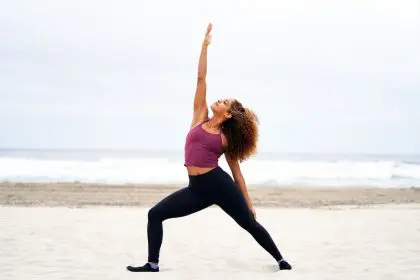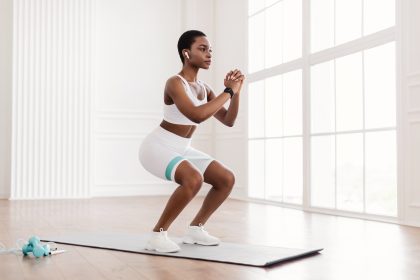You collapse onto the bench between every set, thinking you’re giving your muscles the rest they need to perform well on the next round. But sitting during rest periods might be sabotaging your workout results by reducing blood flow, decreasing metabolic activity, and interfering with the physiological processes that drive muscle growth and strength gains.
The way you spend your rest time between sets significantly impacts exercise performance, recovery, and adaptation. Most people treat rest periods as complete downtime, but strategic activity during these breaks can enhance your training results while improving overall workout efficiency and effectiveness.
Blood flow stagnation limits muscle recovery
When you sit between sets, blood pooling occurs in your lower extremities as gravity and reduced muscle activity slow circulation back to your heart and working muscles. This decreased blood flow limits the delivery of oxygen and nutrients needed for rapid recovery between sets.
Active recovery during rest periods keeps your circulatory system engaged, ensuring that metabolic waste products like lactate are cleared more efficiently from working muscles. Better waste removal allows for faster recovery and maintained performance across multiple sets.
Standing or light movement between sets maintains the muscle pump effect that enhances nutrient delivery and waste removal. This improved circulation can reduce the fatigue accumulation that typically occurs as workouts progress and set quality deteriorates.
The cardiovascular benefits of staying mobile between sets also contribute to better overall workout capacity and endurance, allowing you to maintain higher intensity throughout longer training sessions.
Metabolic rate drops with sedentary rest
Sitting between sets causes your metabolic rate to drop significantly as your body shifts into a more relaxed state, reducing calorie burn and limiting the metabolic stimulus that contributes to fat loss and conditioning improvements.
Active rest periods maintain elevated metabolic activity that extends the calorie-burning window of your workout while supporting the hormonal environment needed for muscle growth and fat loss. This sustained metabolic elevation can significantly impact your body composition goals.
The temperature regulation benefits of staying active during rest periods help maintain optimal muscle function and reduce the warm-up time needed for subsequent sets. Muscles perform better when they stay warm and ready for action.
Prolonged sitting can also trigger the body’s relaxation response, making it harder to maintain the mental focus and physical readiness needed for high-quality training sets.
Joint stiffness reduces performance quality
Extended sitting between sets allows joints to stiffen and muscles to cool down, requiring additional warm-up time before the next set and potentially reducing range of motion and movement quality. This stiffness can compromise exercise form and limit the effectiveness of your training.
Active movement during rest periods maintains joint mobility and muscle temperature, ensuring that you can perform exercises through full ranges of motion with proper mechanics. Better movement quality leads to more effective muscle activation and reduced injury risk.
The transition from sitting to explosive movement required for many exercises can be jarring for your nervous system and increase injury risk compared to maintaining readiness through light activity. Staying mobile keeps your neuromuscular system primed for action.
Dynamic stretching or mobility work during rest periods can actually improve your performance on subsequent sets by addressing movement restrictions and optimizing joint positioning for better exercise execution.
Mental focus deteriorates with passive rest
Sitting and completely disengaging between sets can cause your mental focus and training intensity to wane, making it harder to maintain the concentration needed for challenging lifts or high-intensity exercise.
Active rest periods help maintain the psychological momentum and training mindset that contribute to consistent performance across multiple sets. The mental engagement required for light movement keeps you in the training zone.
Social distractions that often occur when sitting in common gym areas can further diminish focus and extend rest periods beyond what’s optimal for training adaptations. Staying mobile helps maintain training focus and prevents excessive rest times.
The rhythm and flow of maintaining some activity between sets can improve workout efficiency by naturally timing rest periods and preventing the tendency to rest longer than necessary.
Strategic active recovery maximizes training benefits
Use rest periods for light movement like walking, dynamic stretching, or mobility exercises that complement your training goals without interfering with recovery. The key is staying active without creating additional fatigue.
Perform exercises for non-competing muscle groups during rest periods to maximize time efficiency while maintaining blood flow and metabolic activity. For example, do calf raises between upper body sets or arm circles between lower body exercises.
Use breathing exercises or light core activation during rest periods to maintain engagement while supporting recovery. Deep breathing enhances oxygen delivery while core activation keeps stabilizing muscles ready for the next set.
Adjust your active rest intensity based on the demands of your workout – lighter activity for heavy strength training and slightly more vigorous movement for conditioning or higher-volume training sessions.
Time your rest periods appropriately while staying mobile, typically 30-90 seconds for conditioning work, 2-3 minutes for moderate loads, and 3-5 minutes for heavy strength training. Active recovery helps you use this time more effectively.
Monitor your performance across sets to ensure that your active rest approach is enhancing rather than hindering your training quality, adjusting the intensity and type of movement based on how you feel and perform.















